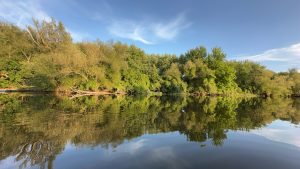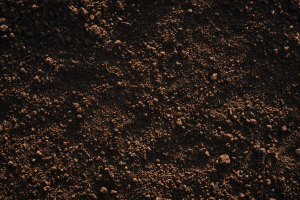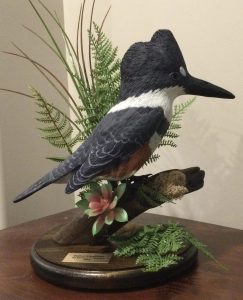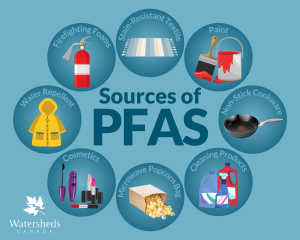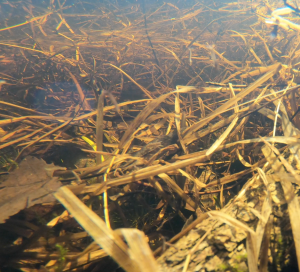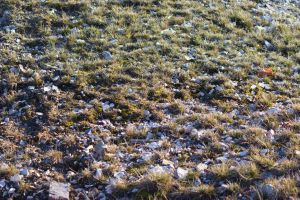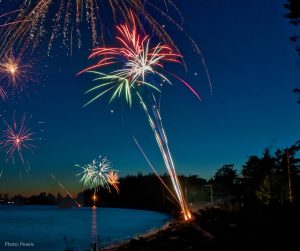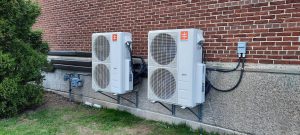by Nathaniel Sneyd-Dewar, Riparian Habitat Restoration Intern Shoreline properties are located on the frontline of climate change as many environmental functions and processes are pronounced at this critical area for biodiversity and the water cycle. Shoreline properties exist in the riparian area (within 30m of the shoreline), which is a vital region for ecosystem and environmental resilience and can be considered the “ribbon of life”. The immense diversity and connection between land and ... Read More
Shoreland resilience under a changing climate
by Alana Coulombe, Education programs administrator Canada’s freshwater is under threat against the impacts of climate change, in addition to shoreland development and traditional land use practices. Increasing climate change pressures and associated hydrologic changes will alter where, when, and how precipitation falls and water flows. This, in turn, will impact the quantity, quality, and availability of Canada’s freshwater resources. The cumulative effect of these multiple stressors, along ... Read More
Soil: More Important and Fascinating Than It Seems
by Ty Fischer, Riparian Health Restoration Intern You may not often offer it much consideration when you are walking over it or planting in it, but soil is a wonderfully complex and extraordinarily important thing that both us and our native wildlife owe much of our lives to. Soil is necessary for the growth of plants, which are primary producers. These are organisms that harvest energy from the sun and transform it into chemical energy, thereby forming the basis of all food webs. It is ... Read More
Small Businesses: Freshwater Conservation Heroes
by Ty Fischer, Riparian Habitat Restoration Intern Canada is a country known for its freshwater. It is a part of our identity, with many of us forming foundational memories in and around our rivers and lakes throughout our lives. With twenty-percent of the global supply of freshwater held within our borders (Government of Canada, 2018), our waterways and the wildlife they sustain are truly unique in the world. Such a widely distributed and heavily used asset requires us to all work ... Read More
The ‘King’ of Nature
by Robert Pye, Executive Director Gather around kids. This Gen X'er wants to tell you about the days when Canadians opened up their wallets to spot special birds. Four decades ago, the Bank of Canada introduced its birds of Canada series that featured snowy owls on our $50 dollar bills, loons on $20’s, and ospreys on $10’s. Who else remembers robins on $2's before the burgundy bill was cashed in for the pocket heavy toonie we have today? It was the third smallest denomination that ... Read More
PFAS: The ‘Forever Chemicals’
by Alana Coulombe, Education programs administrator What are PFAS? Per- and polyfluoroalkyl substances (PFAS) are a large, complex group of over 4,700 human-made substances used in a wide range of consumer products (Health Canada, 2023). PFAS molecules consist of a chemically stable chain of linked carbon and fluorine atoms (National Institute of Environmental Health Sciences [NIEHS], 2024). This strong carbon-fluorine bond is responsible for most properties of PFAS including their ... Read More
Macroinvertebrate Biomonitoring: Small Creatures, Big Impacts
by Ty Fischer, Riparian Health Restoration Intern The word “spineless” is often used to describe something weak or purposeless. There is a certain irony, then, that macroinvertebrates – organisms that are “spineless” by their very nature – are actually vitally important in helping humans understand and monitor the health of freshwater ecosystems. Macroinvertebrates are any organisms that do not have backbones and are large enough to be spotted without the use of a microscope. In aquatic ... Read More
Salt Tolerant Native Plants
by Alana Coulombe, Education programs administrator Why do some plants along roadways have brown or scorched leaves or needles in the spring? Although road salts are widely used to combat icy conditions during the winter, the environmental consequences are often not obvious until the spring. Road salt sprays can harm nearby vegetation by penetrating leaf scars and killing dormant buds, and by accumulating in the soil where they are taken up following the same route as other nutrients in ... Read More
Fireworks and Freshwater Ecosystem Health
by Nathaniel Sneyd-Dewar, Riparian Habitat Restoration Intern Fireworks have long been a spectacular sight for people worldwide, but outside of the sounds and visuals, the effects of dispersed particles are less considered. While once reserved for national holidays and other major occasions, fireworks have become increasingly affordable, available, and used by families and friends in increasingly diverse locations. This shift presents a change from large shows in urban centres to firework ... Read More
Building a Greener Future: Shining a Light on Community Green Audit and Retrofit Projects
by Nicole Dubé, Freshwater Health Coordinator Whether you are looking to install new heating units, enhance water efficiency, or upgrade to LED lighting, there are many changes, big or small, that you can make to help protect the environment. Learn about the benefits of green audits and retrofits, how different Ottawa, Ontario area organizations have made a difference in their communities, and how you can start your own project! Green audits and retrofits represent a pivotal step towards ... Read More
- « Previous Page
- 1
- 2
- 3
- 4
- 5
- …
- 17
- Next Page »


